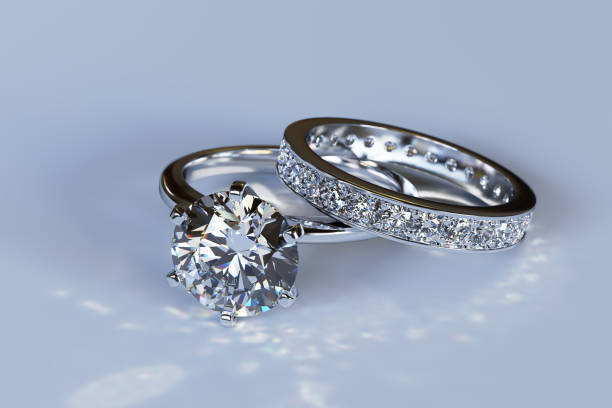How Jewelers Determine Diamond Value All Entries

Are diamonds priced closer to what buyers or sellers are seeking? It depends on market trends, but it also comes down to the 4 C's: color, clarity, cut and carat. These four factors have the most impact on diamond value, but you should also have a sense of supply and demand. Here's a simplified explanation of how diamond value is estimated by reputable gemologists.
Measuring the 4 C's
The Gemological Institute of America (GIA) is respected around the world as the definitive association that explores gemology and sets standards for the jewelry industry. A GIA gemologist carries a "GG" credential, which indicates they have completed the Graduate Gemologist program. GGs are trained to determine diamond value using scales created for the 4 C's.
- Color - Using a D-Z scale, D is colorless, making it the highest value. Higher letters indicate greater color visibility.
- Clarity - This GIA scale rates "flawless" as best clarity due to lack of imperfections, called inclusions, in the crystal. The more inclusions, the less clarity and value.
- Cut - Sharp cuts are responsible for the bright sparkle, although round cuts are typically worth more. A calculation involving angles generates a C/P ratio (crown angle divided by pavilion angle). "Best" cuts range from .83 to .85. The cut is considered "junk" if the C/P ratio is less than .79 or over .91.
- Carat - Sometimes diamond weight, measured in carats, can be the most vital element of the gem's value. One carat equals 200 milligrams.
Something to watch out for with diamond color is that inferior gems can be coated with color to create the appearance of a more attractive jewel. A newbie to the jewelry market might not be able to tell the difference. Treatment through high temperature can improve the gem's color. When a diamond is treated or synthesized it's evaluated by gemologists differently, but either process usually lessens the gem's market value.
Why a Diamond's Age and Condition Matter
Tough and durable, diamonds are sharp enough to cut or scratch other objects. But diamonds can be scratched as well, which reduces their value. Usually, the older a gem gets, the more it can potentially grow in value, as long as it remains in good condition. A diamond that's a century old is considered "antique" and can rise to high valuation levels, especially if it was issued by an iconic brand or is associated with a famous figure. "Vintage" jewelry is typically about 20-100 years old and may remain trendy as nostalgia.
Different Types of Appraisals
Jewelry appraisals by insurance companies differ from how jewelers approach them. An insurance company looks to limit payouts with technicalities and gray areas. It's more likely to hire or outsource to appraisers who have completed courses through the Jewelry Insurance Appraisal Institute.
Since older jewelry is harder to evaluate, giving it a wider range of low and high estimated values, insurers usually only cover jewels up to a certain value in a standard homeowners' insurance policy. Some plans give payouts at replacement cash value (RCV), while others are based on actual cash value (ACV).
Conclusion
It's advantageous for any jewelry investor to understand diamond value and the process in which it's determined. When you know the 4 C's and have a sense of the current jewelry market, you'll be in a good position to profit from selling gems. Contact us at Ralph Mueller & Associates for more information on seeking the best opportunities in diamond investing.